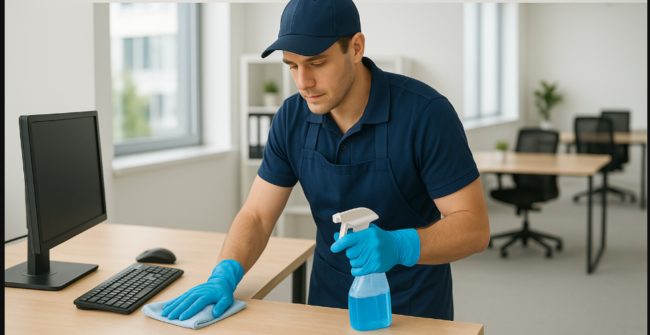
Understanding the Nature of Hoarding
Hoarding is more than just excessive clutter, it’s a complex mental health condition officially recognized by psychological professionals. Hoarding disorder is characterized by a persistent difficulty discarding or parting with possessions, regardless of their actual value. Individuals often experience distress at the thought of getting rid of items and feel a strong need to save them.
In a city like Seattle, where urban living, older homes, and rising housing costs often converge—hoarding can quickly escalate from a private issue to a public concern. It can compromise safety, health, and relationships, and even lead to legal or financial consequences. That’s where specialized hoarding cleanup services become not just helpful, but essential.
What Hoarding Cleanup Services Entail
Professional hoarding cleanup services go far beyond basic cleaning or junk removal. They’re structured, empathetic, and tailored to the specific needs of each home and individual. Here’s what these services typically include:
1. In-Home Assessment
The process usually begins with an in-home evaluation. Professionals assess the extent of the hoarding, determine any immediate health or safety risks, and craft a detailed action plan. This stage is crucial to understand the client’s emotional needs as much as the physical ones.
2. Personalized Cleanup Plan
No two hoarding situations are alike. Cleanup teams develop customized plans that take into account:
- Level of clutter or hoarding severity
- Size and layout of the home
- Potential biohazards (mold, pests, waste)
- Presence of structural damage
- Emotional and mental health concerns
3. Sorting and Organizing
A compassionate and collaborative approach is essential. Cleanup professionals work with clients to sort items into categories: keep, donate, recycle, or dispose of. The emotional weight of this process cannot be overstated—many items may hold deep sentimental value, even if they appear trivial to outsiders.
4. Safe Disposal and Biohazard Management
Hoarding environments may involve significant health hazards. These can include decaying food, rodent infestations, animal waste, mold, or used needles. Cleanup teams are trained and equipped to safely dispose of biohazardous materials while adhering to health regulations.
5. Deep Cleaning and Restoration
Once the clutter is removed, the space often needs deep cleaning. This may involve disinfecting surfaces, odor removal, carpet cleaning, and pest control. In extreme cases, minor repairs or repainting may be required to restore livable conditions.
6. Ongoing Support and Relapse Prevention
Long-term success often involves emotional and behavioral support. Some cleanup services coordinate with mental health professionals or offer referrals to therapists and support groups. Others may provide follow-up visits to ensure the space remains safe and organized.
Why Seattle Is a Unique Environment for Hoarding Cleanup
Seattle’s urban and environmental characteristics make hoarding cleanup particularly urgent and complex.
Tight Living Spaces
In neighborhoods like Capitol Hill, Ballard, and the Central District, many residents live in apartments, condos, or shared housing. In these smaller environments, hoarding quickly creates safety hazards, limits mobility, and increases fire risk.
Older Homes and Infrastructure
Many Seattle homes are decades or even a century old. These homes are more vulnerable to structural damage from moisture, pests, or the weight of accumulated belongings. Clutter can hide signs of serious damage such as wood rot or foundational issues.
Community and Public Safety Concerns
Hoarding doesn’t only affect the individual—it can impact neighbors and shared spaces. In multi-unit buildings, blocked exits, pest infestations, or offensive odors can spread quickly. Landlords and property managers are often involved in addressing hoarding cases due to legal or safety obligations.
Environmental Considerations
Seattle’s damp climate accelerates mold growth, which can thrive in buried or forgotten clutter. This increases the urgency for professional intervention to maintain a safe, healthy living environment. This is especially true for emergency situations, like in the case of a death cleanup, for example.
The Cleanup Process: What to Expect
Hoarding cleanup is a methodical process, typically unfolding over several days or even weeks, depending on the severity of the case.
Step 1: Initial Contact and Evaluation
Clients or their family members contact the cleanup team to describe the situation. A site visit follows to evaluate the condition of the property, identify risks, and establish a plan.
Step 2: Scheduling and Setup
Logistics are planned in detail: scheduling, team size, disposal arrangements, and safety protocols. Some services also bring in pest control or sanitation experts as needed.
Step 3: Decluttering and Item Sorting
With the client’s participation (if possible), the team begins sorting items. Sensitive handling is critical to reduce emotional stress. Items of value—emotional, financial, or legal—are preserved and returned to the client.
Step 4: Waste Disposal
Garbage, broken furniture, expired food, and hazardous materials are carefully removed and transported to the appropriate disposal or recycling facilities.
Step 5: Deep Cleaning
With the space cleared, surfaces are cleaned and sanitized. Special attention is given to bathrooms, kitchens, and ventilation systems to ensure safety and hygiene.
Step 6: Restoration and Organization
If needed, basic repairs may be performed. Items that are retained are organized in a way that promotes order and cleanliness, supporting the client’s long-term success.
Step 7: Aftercare
Some services offer check-ins, organization coaching, or coordination with mental health providers to help prevent relapse.
Cost Considerations
Hoarding cleanup in Seattle can be expensive, depending on several factors:
- Home Size: A single-bedroom apartment will cost less than a multi-story house.
- Severity: Light hoarding (minimal clutter, no hazards) may be resolved in a day or two, while severe cases (pathway blockages, biohazards, structural damage) can take much longer.
- Biohazards: Presence of mold, waste, or pests increases complexity and cost.
- Special Services: Pest control, carpet replacement, or minor repairs can add to expenses.
Prices can range from a few hundred to tens of thousands of dollars. Many companies provide free estimates, and some offer payment plans or collaborate with nonprofits and government agencies to subsidize services.
Compassion Matters
Perhaps the most important component of hoarding cleanup is compassion. Hoarding often stems from trauma, anxiety, depression, or grief. Cleanup teams trained in trauma-informed care can help individuals feel respected and understood throughout the process.
This compassionate approach is key to building trust, reducing resistance, and ensuring a sustainable transformation. A judgment-free attitude encourages individuals to take part in their healing process rather than feeling forced or shamed into change.
Tips for Families and Caregivers
If you’re supporting a loved one through hoarding cleanup, consider the following:
- Lead with empathy, not judgment.
- Avoid ultimatums; instead, focus on health and safety.
- Involve professionals for both physical cleanup and emotional support.
- Work in small, manageable steps to avoid overwhelming the person.
- Celebrate progress, even if it’s slow or incremental.
Your support can make a significant difference in helping your loved one rebuild a safe, livable home.
Resources and Community Support
Seattle offers a range of mental health services, social support groups, and housing assistance programs. Some nonprofits and municipal organizations focus specifically on hoarding disorder and can provide counseling, coaching, or financial assistance.
Engaging with a network of support—not just a cleaning crew—ensures a more holistic and lasting resolution.
Conclusion
Hoarding cleanup services in Seattle are not simply about cleaning houses—they are about restoring lives. Through structured processes, trained professionals, and empathetic support, individuals struggling with hoarding can regain control, dignity, and comfort in their own homes.
Whether you’re facing these challenges yourself or helping a loved one, know that you’re not alone. With the right guidance and support, transformation is not only possible—it’s entirely achievable.
